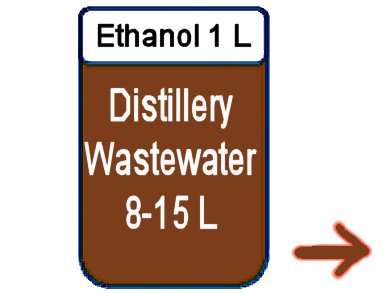Bioethanol manufacturing generates large volumes of high-strength wastewater, mainly from the distillation process. On average, 8−15 L of distillery wastewater (DWW) are generated for each liter of ethanol produced. DWW is characterized by its extremely high chemical oxygen demand (COD), typically 80−100 g/L, its dark brown color and a high sulfate concentration of 1.3−3.7 g/L. Due to the high temperature of the distillation process, the temperature of the wastewater stream is typically 70 − 80 °C. The high COD content offers the potential for energy recovery.
In Seop Chang, Gwangju Institute of Sciences and Technology (GIST), Korea, and colleagues accomplished a simultaneous electricity generation and distillery wastewater (DWW) treatment using a thermophilic microbial fuel cell (MFC). Thermophilic MFCs require less energy for cooling the DWW and can achieve high efficiency for electricity generation and also reduce sulfate along with oxidizing complex organic substrates. The generated current density of 2.3 A/m2 and power density of up to 1.0 W/m2 were higher than previous wastewater-treating MFCs.
They explored the bacterial diversity in a thermophilic anode biofilm, along with the inoculum, using pyrosequencing of the bacterial 16S rRNA gene amplicon, which gave reads long enough (≈400 bp) to identify bacteria at the species level.
Despite the complexity of the DWW, one single bacterial sequence (OTU D1) close to an uncultured Bacteriodetes bacterium became predominant, up to almost 40 % of total reads. The proliferation of the species was concurrent with high electricity generation and high Coulombic efficiency.
- Treatment of Alcohol Distillery Wastewater Using a Bacteroidetes-Dominant Thermophilic Microbial Fuel Cell,
Phuc Thi Ha, Tae Kwon Lee, Bruce E. Rittmann, Joonhong Park, In Seop Chang,
Environ. Sci. Technol. 2012.
DOI: 10.1021/es203861v




